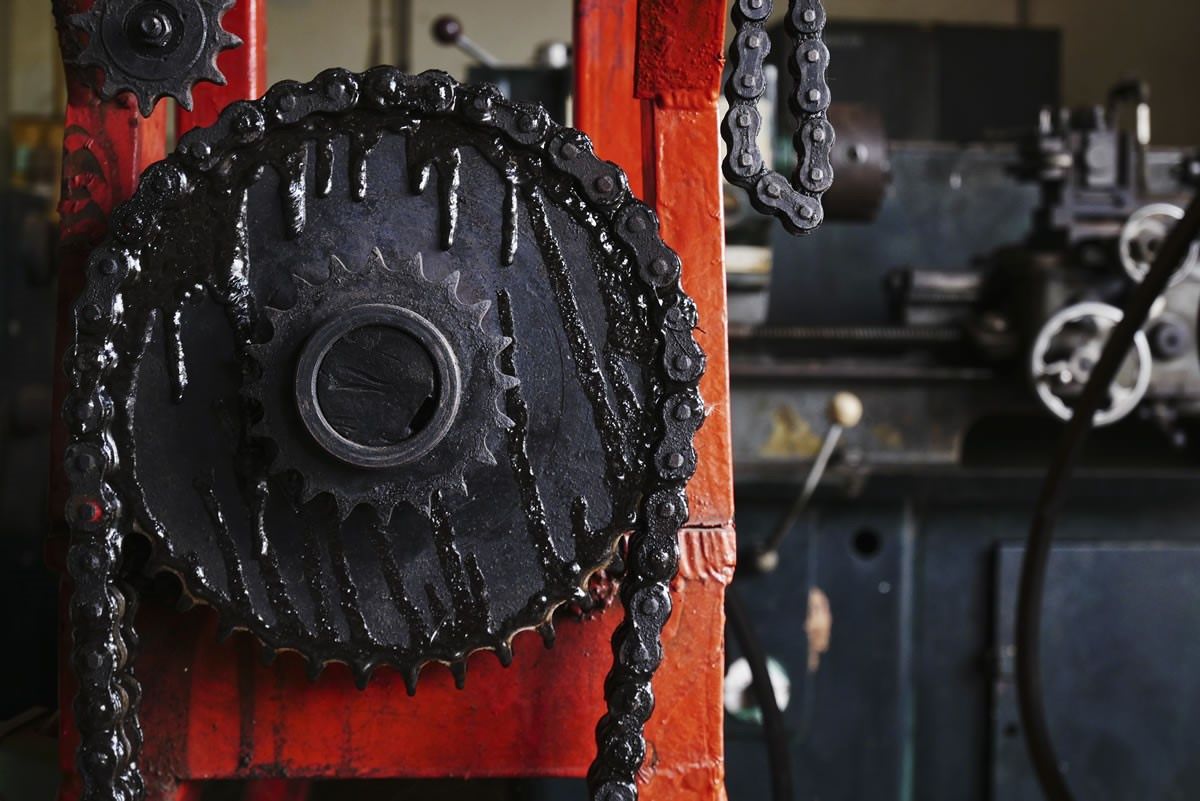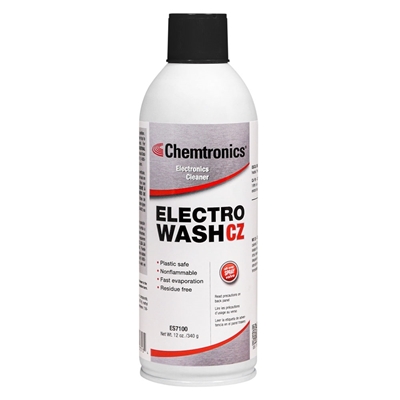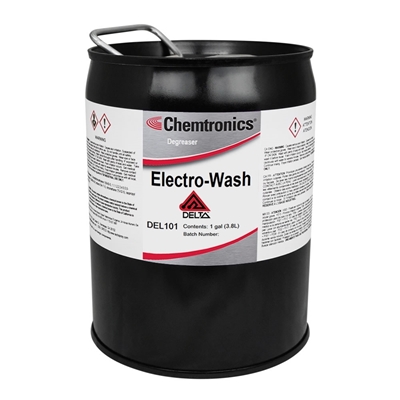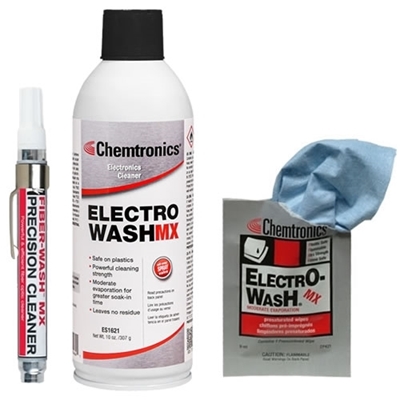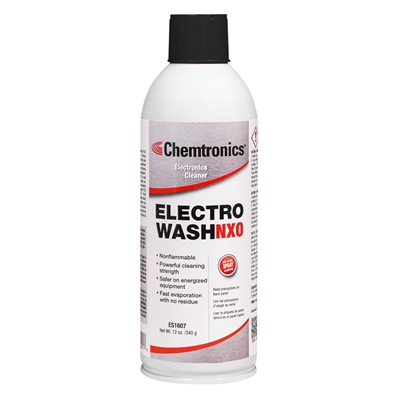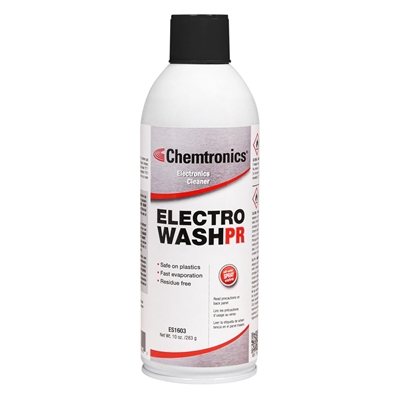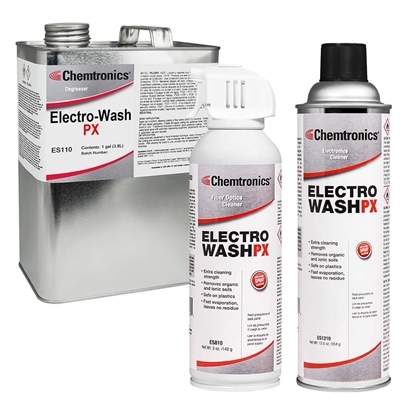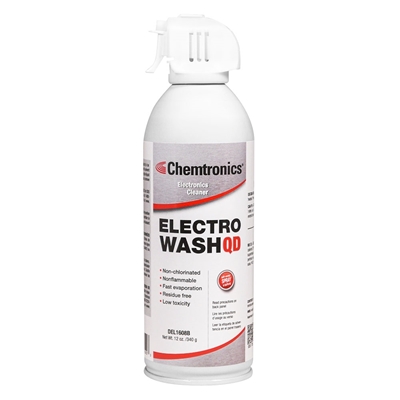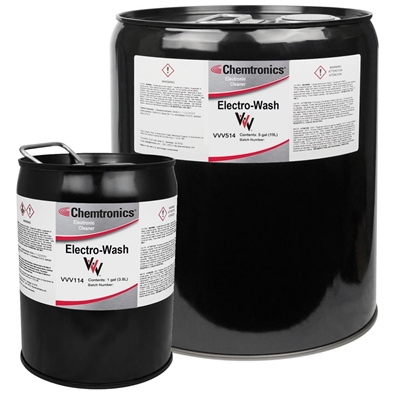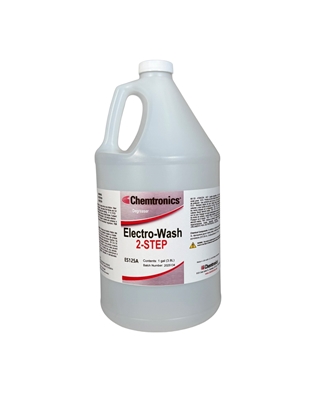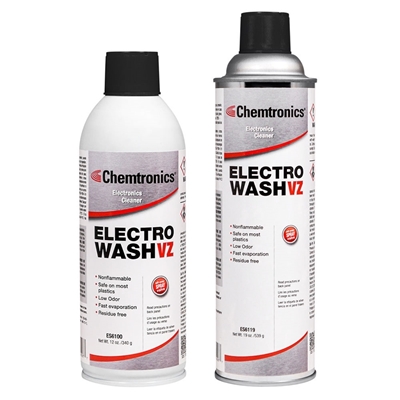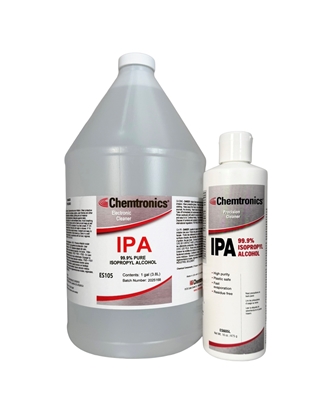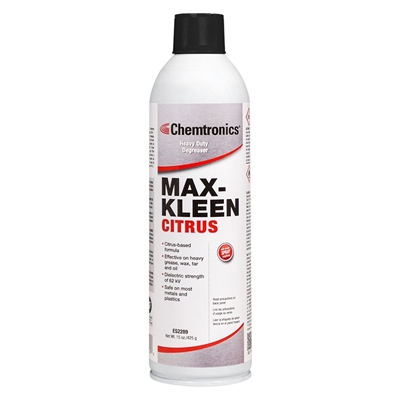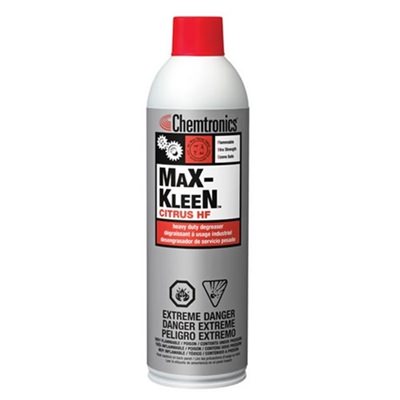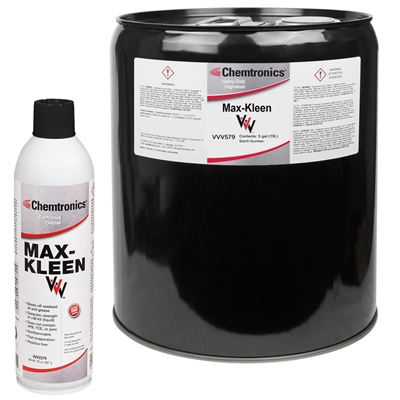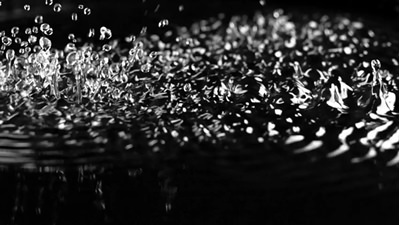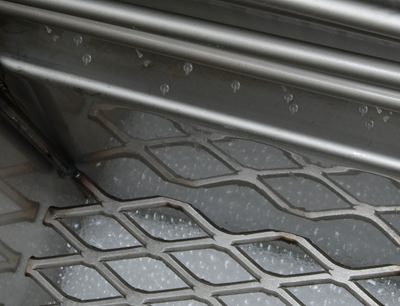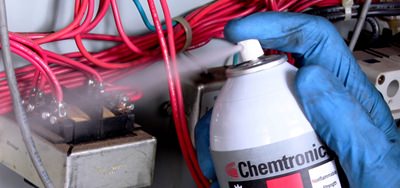What is a degreaser?
A degreaser (also called precision cleaner, maintenance cleaner, and (specific for automotive repair) carb cleaner or brake cleaner) is a solvent or water-based cleaner designed to remove grease, oils, cutting fluids, corrosion inhibitors, handling soils, finger prints, and other contamination common in assembly, stamping, metal fabrication, refineries, motor repair, airplane hangars, and in many other applications.
The goal is to remove contamination quickly while avoiding as much wiping and scrubbing as possible. Degreasing solvents usually come in pressurized aerosol packaging for convenience and to provide a forceful spray that creates agitation and reaches into all the crevices.
Water-based degreasers are common in a trigger sprayer, or gallon or drum containers for immersion or batch system cleaning.
For more automated cleaning, specialized equipment like ultrasonic or vapor degreasers can be used. These are a repeatable process that is better suited for critical cleaning applications like those used in aerospace and medical electronics.
Chemtronics offers a large selection of degreasers and precision cleaners under the Electro-Wash® and Max-Kleen™ brands, which range from economical heavy-industry cleaners to high precision solvents for sensitive components.
Why do I need a degreaser?
The answer varies and is highly dependent on the application. Dust, dirt, grease, and oxidation contamination can cause corrosion, slipping hazards, or overheating, can increase electrical resistance in contact areas, and many other issues.
Cleaner Degreasers are engineered to clean a wide variety of soil, oil, grease, oxides and handling contamination, from equipment and assemblies that include:
- Metal and fiber optic cable splices
- Motors and transformers
- Programmable Logic Controllers (PLCs)
- Pneumatic and hydraulic assemblies
- Electronics and electrical equipment
- Meters/measurement devices
Industrial-strength degreasers offer extra-strength formulas for fast, easy removal of grease, tar, asphalt, oil, and grime in your tougher jobs, including:
- Clutches, armatures, generators, and compressors
- Electrical motors and equipment
- Bearings, chains, cables, pulleys and gear drives
- Brakes, springs, and flywheels
What is the difference between a degreaser and a contact cleaner?
Degreasers are engineered to clean a wide variety of soil, oil, grease, oxides and handling contamination from equipment and assemblies, while a contact cleaner does the same thing specifically for electrical contacts.
A contact cleaner (also called electrical cleaner, switch cleaner, electrical contact cleaner, and, specific for automotive repair, battery terminal cleaner) is a solvent cleaner designed to remove contamination from electrical contacts, the conductive surfaces of connectors, switches and other electrical and electronic components with moving surface contacts.
The goal is to remove insulative contamination as quickly as possible, while avoiding as much wiping and scrubbing as possible. Contact cleaning solvents usually come in pressurized aerosol packaging for convenience and to provide a forceful spray that creates agitation and reaches into all the crevices of the connectors.
What do I look for when selecting a degreaser?
Much as when selecting any other product, there are both options and trade-offs to consider. It’s tempting to jump right to the lowest price, but there are a number of other factors that can have a big impact on performance or safety:
Flammability – Many commercially available degreasers contain alcohols and hydrocarbon solvents both of which are very flammable. They are economical and generally effective cleaners, but can pose a safety hazard without proper ventilation, and if there are open flames, sparks (e.g., welding process), or hot surfaces nearby. Nonflammable degreasers are available to avoid these safety issues but may be at a premium price. Some nonflammable cleaners also have significant toxicity concerns, and may contain toxic materials such as Perchloroethylene, trichloroethylene or n-propyl bromide. High flashpoint (often called “high flash”) solvents are still flammable, but the vapors are less likely to combust in normal ambient temperatures (say below 140°F/60°C).
Dielectric strength – If you plan to remove grease and grime when the power is on, or may turn it on before the solvent has fully evaporated, you should look for a cleaner with as high of dielectric strength as possible. Always know the amperage and voltage of the circuits you are trying to clean before spraying anything onto the circuits, and evaluate the suitability of any cleaner in your application. Dielectric strength is defined as the maximum electric field that the material can withstand before its insulating properties break down. In other words, the lower the dielectric strength, the more likely it will breakdown and allow electricity to flow through it, creating a short circuit and/or a significant safety issue.
Plastic / rubber compatibility – While not a concern for metal cleaning, plastic packaging and components, along with rubber gaskets, need to be watched closely as a new cleaning process is implemented. If the solvent used in a degreaser is incompatible with the plastic, it can craze (create small cracks), embrittle, or soften the material. Rubber seals may swell, shrink or even dissolve if exposed to a harsh solvent. A new degreaser should always be tested before being used extensively on your new (and expensive) equipment.
Toxicity – N-Propyl Bromide (nPB), Trichloroethylene (TCE) and Perchloroethylene (Perc) are toxic chemicals commonly used in degreasers to provide cleaning performance in a nonflammable formula. Workers have suffered major health effects when exposed to high levels of these chemicals, including headaches, dizziness, and even loss of full body control. Further studies have shown a possible link to reproductive problems and cancer. These risks have prompted maintenance facilities to rethink their solvent choices, especially with manual cleaning when exposure tends to be higher than in more automated cleaning processes.
Environmental issues – In the past, ozone depletion was a concern with contact cleaners containing chlorofluorocarbons (CFCs) like the Freon of old, and hydrochlorofluorocarbons (HCFCs) like AK-225. Since those solvents are no longer available on the commercial market in North America, concerns have turned to volatile organic compounds (VOCs), solvents that add to smog, or solvents with high global warming potential (GWP). Some state (e.g., CARB, the California Air Review Board), municipal, and even industry-specific regulations restrict the use of high VOC or high GWP materials.
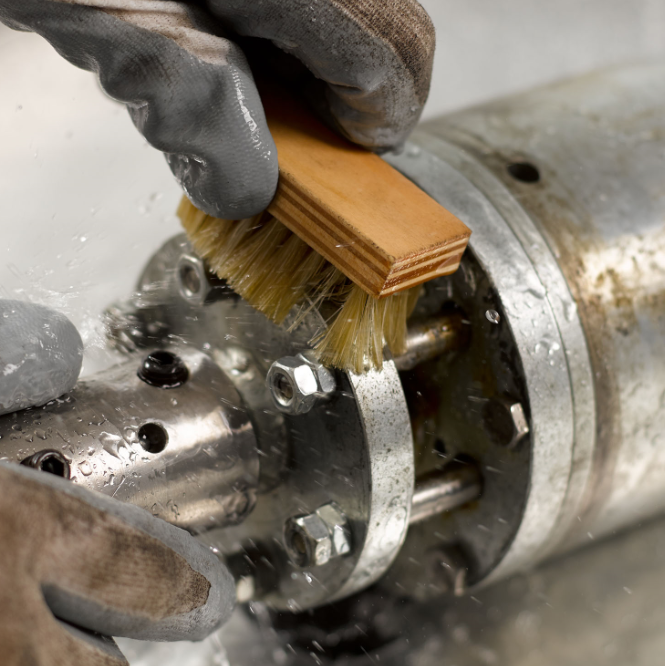
What are the cleaning processes to consider for degreasing?
Manual Degreasing Methods
Degreasing can either happen at the benchtop, work station, or in the field, which generally requires a manual cleaning method. Manual cleaning methods are generally more laborious and less repeatable, so results may vary from operator to operator.
- Aerosol – Aerosol degreasers have the advantage of a sealed system, which ensures fresh solvent every time, and agitation provided by the spray pressure and pattern. A straw attachment is generally included to spray in areas with greater precision.
- Trigger spray – Trigger spray bottles are more common for water-based cleaners and isopropyl alcohol (IPA), but not for aggressive solvent cleaners.
- Liquid immersion – The part can be immersed in a tray or bucket of solvent cleaner, with swabs or brushes used as needed for tenacious soils. Cleaning performance can be further improved by heating the solvent, but this should only be done with nonflammable degreasers.
- Presaturated wipes and swabs – For added convenience, wipes and swabs are available presaturated with a mild solvent like isopropyl alcohol.
Automated or Semi-Automated Degreasing Methods
For higher volume cleaning, like in a manufacturing, stamping or forming operation, or if reduced variability is required, as in critical applications like aerospace and medical electronics, more automated cleaning methods are used.
- Ultrasonic – Ultrasonic cleaning equipment use sound waves to create implosions within the grease, breaking it apart and lifting it off the part. Most equipment have the option of heating the solvent to increase cleaning performance. Only use this option with a nonflammable degreaser. Cross-contamination can be a concern, so change the solvent regularly. Ultrasonic cleaning might be too rough on sensitive parts and materials.
- Vapor degreaser – Vapor degreasing is the go-to process for the highest precision cleaning, like those used in aerospace and medical components. Parts can be submerged in a sump of boiling solvent, in a rinse sump with ultrasonics, and rinsed in solvent vapors. Special solvents need to be used that are azeotropes or near-azeotropes, so it will not change properties as the solvents are boiled off and reconstituted in a continuous cycle.
- Batch washer – Basically a dishwasher or car wash for parts. Parts are either stationary in a rack or run on a conveyor, and the degreasing agent (usually water-based and highly caustic) is sprayed over the parts.
Should a degreaser be nonflammable?
While it isn’t always necessary, a nonflammable degreaser would be the safest option if the vapors or liquid could be exposed to sparks, open flames, or hot surfaces. Of course, when the electrical device is powered, there is a much greater potential for sparks.
Many commercially available degreasers contain alcohols and hydrocarbon solvents, which are very flammable. They are economical and effective cleaners, but can pose a safety hazard without proper ventilation, and if there are open flames, sparks (e.g., welding process), or hot surfaces nearby. Nonflammable contact cleaners are available to avoid these safety issues.
Nonflammable degreasers are readily available, although they are generally more expensive than flammable degreasers. Chemtronics has several nonflammable degreasers available, including Electro-Wash® VZ , Electro-Wash CZ, Electro-Wash Delta, Electro-Wash QD, Electro-Wash NXO, and Electro-Wash Two Step.
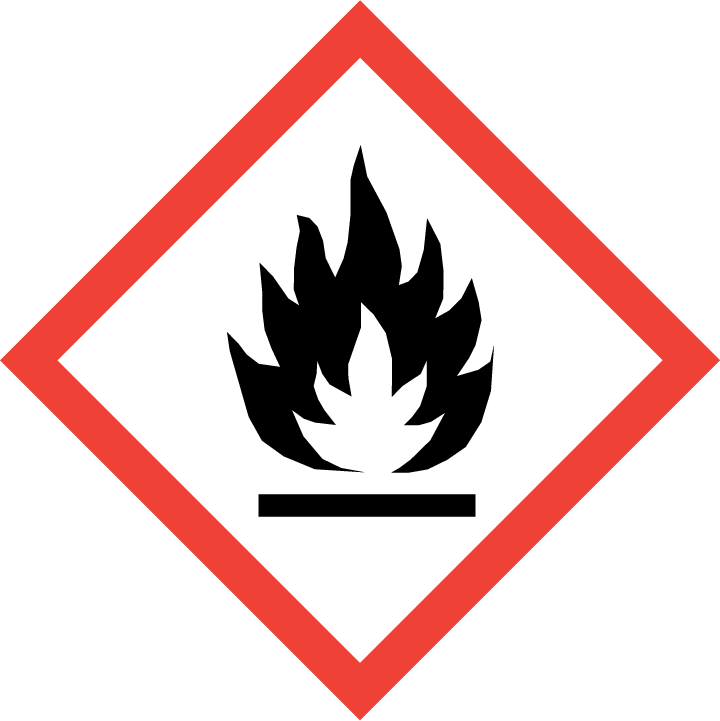
The most common method of identifying the flammability rating of a degreaser is the GHS (Global Harmonized System) flammable pictogram (see diamond symbol above). Unless a degreaser is able to pass a very stringent test, it must have the flammable pictogram on the label. For an aerosol cleaner, the test involves spraying the solvent cleaner into a drum with a candle for 5 minutes. If it doesn’t ignite within that time period, the cleaner is considered nonflammable.
Other standards, like NFPA (National Fire Protection Association) and HMIS (Hazardous Materials Identification System), provide a rating from 0 to 4, zero being the lowest flammability rating, or nonflammable. These ratings are derived from a version of a flash point test. To measure the flash point of a solvent, it is heated from room temperature to boiling point, all the while trying to light the vapors with either a sparker or lighter of some sort. If the vapors light, the temperature of the heated solvent is recorded providing a flash point.
What does “high flash” or “flash point” mean?
You may find some degreasers with “High Flash” or “HF” in the name. High flashpoint solvents still support combustion but the vapors will not combust in normal ambient temperatures (say below 140°F/60°C). This rating is derived from a version of a flash point test. To measure the flash point of a solvent, it is heated from room temperature to boiling point, all the while trying to light the vapors with either a sparker or ignition source. If the vapors light, the temperature of the heated solvent is recorded providing a flash point.
High flash point degreasers are generally chosen because they have a relatively low cost and considered safer to use in normal operating conditions compared to highly flammable solvents. Be aware that high flash cleaners commonly contain terpene-based solvents and/or citrus-based d-limonene solvents, which have extremely slow evaporation. While an alcohol-based solvent might fully evaporate out of a connector in minutes, a high flash solvent could take hours.
Do I need to shut off power before cleaning electrical equipment?
BEFORE you start spraying, we strongly recommend you shut down power to avoid the potential of sparks, electrical shorts or discharges, and other safety hazards. If, for whatever reason, you don’t have the option of disconnecting the power, look for degreasers with a dielectric strength above 30 kV (30,000 volts). Choosing a nonflammable cleaner would also add a layer of safety in case there is a spark.
Is it safe to clean electrical equipment while the power is on?
There is no way to give a definite answer for all circumstances, because safety is highly dependent on the amount voltage and amperage as well as environmental factors like the working environment. On the other hand, choosing a degreaser with high dielectric strength or breakdown (also called withstand) voltage increases safety when you do have to clean energized equipment. A nonflammable cleaner would also add a layer of safety in case there is a spark.
What is dielectric strength?
Dielectric strength is defined as the maximum electric field that the material can withstand under ideal conditions without breaking down. Breaking down in this sense is described as a failure of insulating properties, where the electricity breaks free of the conductors and burns a path through the weakest area of the insulating materials.
And it’s not a breakdown over time. As soon as there is enough free electricity it will immediately or, in a nanosecond, discharge through the insulating material. If it doesn’t discharge through, it’s going to severely degrade it to the point it is of no insulating use.
In short, you need to choose a cleaner with high dielectric strength because you want it to clean without conducting. Remember, certain soils such as carbon are effective conductors of electricity, and both the combination of the conductivity of the soil and cleaning solution need to be taken into consideration. You want the cleaner to act as an insulator to protect you while you are using it. It seems basic, but it should clean an energized surface, not conduct electricity back to you or to your insulating material, and it should not corrupt or attack the circuit you are cleaning. When selecting a degreaser, look for dielectric strength in the product specifications. The higher the number the better, and you want to avoid spraying energized equipment with anything below 30 kV (30,000 volts).
Should I worry about plastic packaging and components and rubber seals when degreasing?
While the contact surfaces of connectors are metal, they are often housed in plastic, and rubber gaskets as seals. If the solvent used in a contact cleaner is incompatible with the plastic, it can craze (create small cracks), embrittle, or soften the material. Rubber seals may swell, shrink or even dissolve if exposed to a harsh solvent.
Rigid plastics like ABS, polycarbonate (trade name Lexan), and acrylic materials like Plexiglass can be very sensitive to harsh solvents like toluene, xylene, and acetone. Alcohol and hydrocarbon-based solvents tend to be better on sensitive plastics.
Rubber, silicone or other seals or gaskets made of elastomeric (soft) materials can swell or shrink with exposure to harsh solvents. After the solvent flashes off, they may spring back to their original dimensions, or be permanently changed, impacting the effectiveness of the seal. Polyester or Teflon-based gasketing materials are less prone to this type of damage from harsh solvents.
A new degreaser should always be tested before use on any questionable applications, using any live (and expensive) equipment. If you do have very sensitive materials to clean, Chemtronics offers Electro-Wash® CZ for the best material compatibility.
Are there cleaners that are safe on plastic materials and rubber gaskets?
Alcohol and hydrocarbon-based solvents tend to be better on sensitive plastics. If you do have very sensitive materials to clean and need a nonflammable solvent, Chemtronics offers Electro-Wash® CZ for the best material compatibility.
Are there degreasers that are more toxic than others?
N-Propyl Bromide (nPB), Trichloroethylene (TCE) and Perchloroethylene (Perc) are toxic chemicals commonly used in degreasers to provide cleaning performance in a nonflammable formula. Workers have suffered major health effects when exposed to high levels of these chemicals, reporting headaches, dizziness, and even loss of full body control. Further studies have shown a possible link to reproductive problems and cancer.
While federal agencies have been slow in regulating nPB, CA OSHSB has a PEL of 5ppm and listed it as a developmental/reproductive toxicant under Prop 65. Pennsylvania has included it on its hazardous substance list. ACGIH has listed the TLV for nPB as 10 ppm, but there is a proposal to decrease it to 0.1 ppm. Comparable to TCE, PCE, and MeCl in toxicity, nPB has been determined by NTP as “reasonably anticipated to be a human carcinogen.” (source: NTP, “Report on Carcinogens, Thirteenth Edition: 1-Bromopropane”, http://ntp.niehs.nih.gov/ntp/roc/content/profiles/bromopropane.pdf.) Effective January 1, 2018, Ontario, Canada has implemented the ACGIH recommendations for nPB.
These risks have prompted maintenance facilities to rethink their solvent choices, especially with manual cleaning when exposure tends to be higher than the more automated cleaning processes. Contact cleaning, by its very nature, is very hands-on, so close control of chemical exposure is generally very challenging. How many electricians do you see with a respirator? The best option is to avoid the most toxic solvents, even if they are legal and readily available.
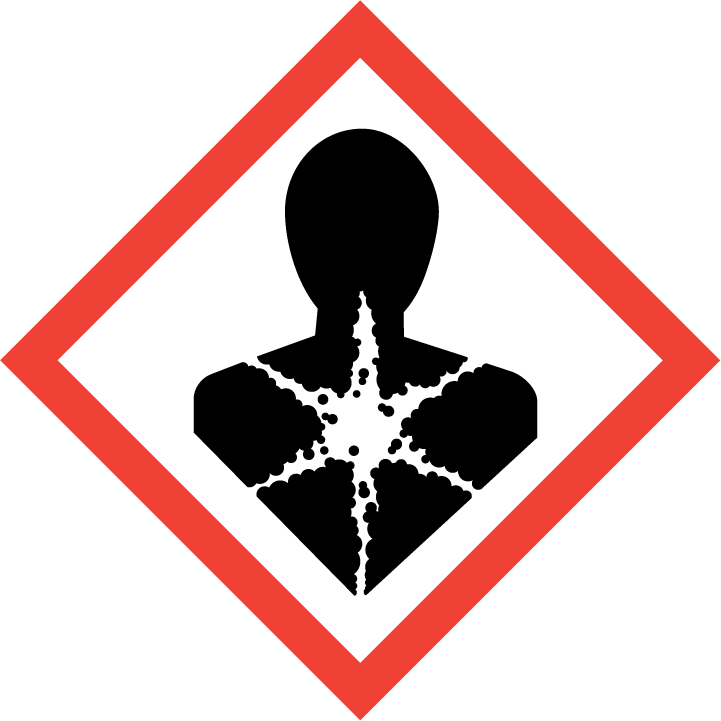
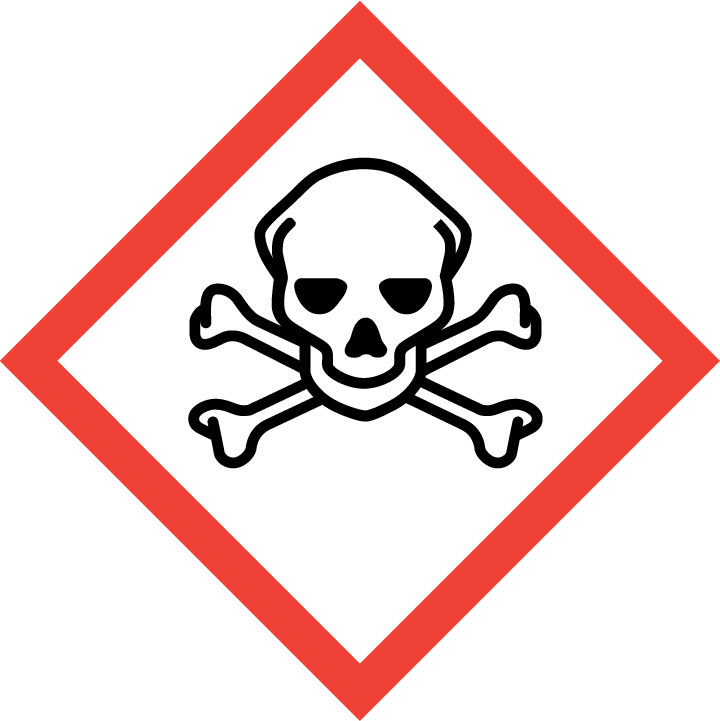
The quickest and easiest method of identifying a potential concern is the GHS (Global Harmonized System) pictograms (see diamond symbol above). If you see the chronic toxicity pictogram (diamond containing person with exploding chest), that means the product contains something that can cause long-term effects. That doesn’t necessarily mean a carcinogen, but it should prompt you to look closely at the Safety Data Sheet (SDS). You may need to take extraordinary measures to reduce personal exposure, or if that is unrealistic for your application, avoid the product altogether. The acute toxicity pictogram (diamond containing skull and cross-bones) means the product can have a short-term health impact. Again, check the SDS carefully if you see this symbol
No Chemtronics contact cleaner contains toxic solvents like nPB, TCE, and Perc. While you still should pay attention to label warnings, SDS, and wear adequate personal protection equipment (PPE), the requirements will not be as over-the-top to stay within a safe range of exposure.
Are there environmental concerns with using degreasers?
In the past, ozone depletion was a concern with contact cleaners containing chlorofluorocarbons (CFCs) like the Freon of old, and hydrochlorofluorocarbons (HCFCs) like AK-225. Since those solvents are no longer available on the commercial market in North America, concerns have turned to volatile organic compounds (VOCs), solvents that add to smog, or solvents with high global warming potential (GWP). Some state (e.g., CARB, the California Air Review Board), municipal, and even industry-specific regulations restrict the use of high VOC or high GWP materials.
To complicate things, VOC is defined and measured differently by various agencies. A contact cleaner might be considered low-VOC according to the standard EPA (Environmental Protection Agency) definition, but may be high according to CARB. If low-VOC is the goal, Chemtronics Electro-Wash® VZ, and Electro-Wash CZ, Electro-Wash QD, and Electro-Wash PR are all great options to consider.
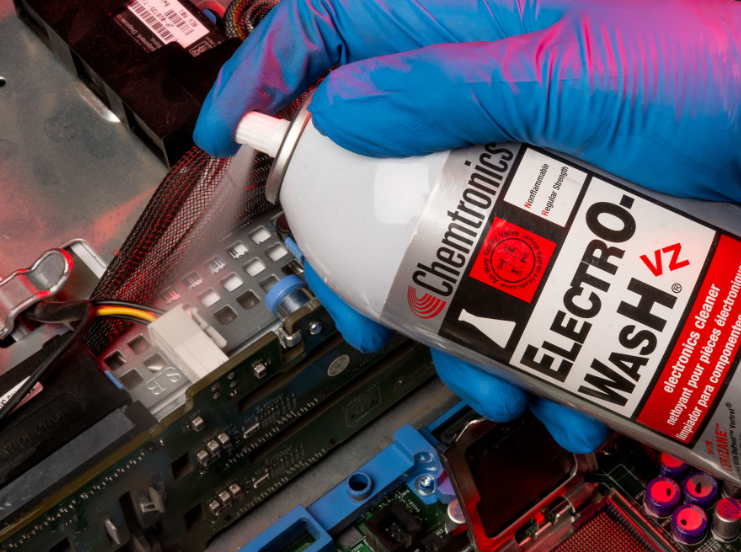
Chemtronics Electro-Wash® and Max-Kleen™ Degreasers and Precision Cleaners
Chemtronics® complete line of high purity solvents are the finest, most effective products made for the critical cleaning and degreasing of electronics, electrical assemblies, and sensitive components. Every degreaser and cleaning agent possesses unique properties suited to specific applications — from precision cleaning of solvent sensitive components to degreasing of electrical and electronic equipment. Several of these products can be used in benchtop ultrasonic, immersion, and vapor degreaser cleaning systems.
Electro-Wash® Cleaner Degreasers are engineered to clean a wide variety of soil, oil, grease, oxides and handling contamination from equipment and assemblies that include:
- Metal and fiber optic cable splices
- Motors and transformers
- Programmable Logic Controllers (PLCs)
- Pneumatic and hydraulic assemblies
- Electronics and electrical equipment
- Meters/measurement devices
Max-Kleen™ Heavy-Duty Degreasers rise to the challenge of your most difficult jobs. These industrial strength cleaners offer extra-strength, fast, easy removal of grease, tar, asphalt, oil, and grime demanded by your toughest degreasing jobs, including:
- Clutches, armatures, generators, and compressors
- Electrical motors and equipment
- Bearings, chains, cables, pulleys and gear drives
- Brakes, springs, and flywheels
Our technical assistance staff will be happy to discuss the products with you and answer any of your concerns or technical questions. Check out the Chemtronics degreaser and precision cleaner selection guide [https://www.chemtronics.com/cleaner-degreaser-selection-guide].
For samples or technical help, email [email protected] or call 770-424-4888.

